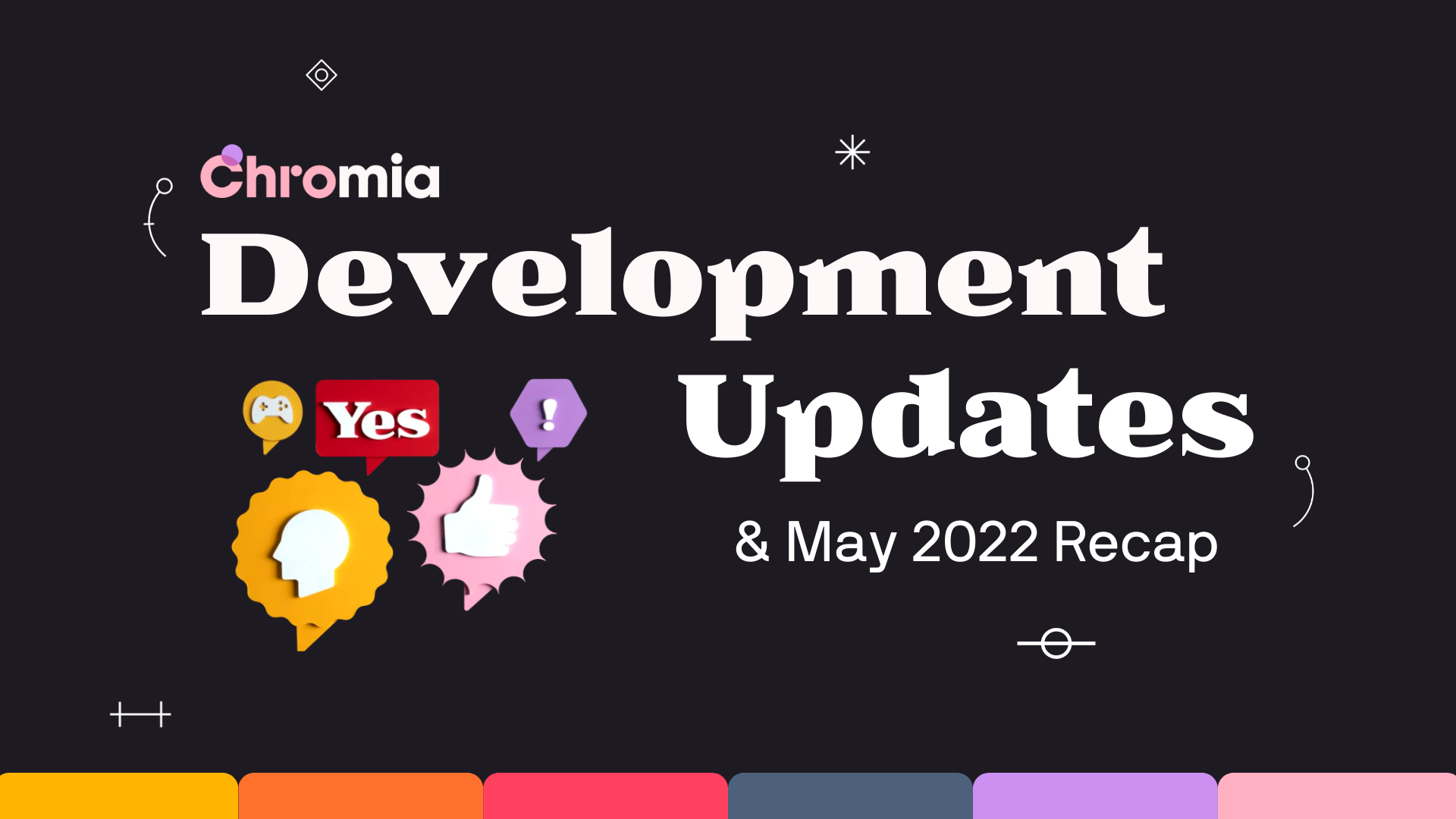TLDR Highlights from this Article:
- Mainnet development overview, including a more in-depth look at the ‘Directory Chain’
- EIF (Ethereum Interoperability Framework) and how it will enable bridging and other interactions between Chromia and EVM blockchains
- Battle Derby has joined our ecosystem
- Todd Miller will present at NFT.NYC
Development & Technical Roadmap Updates
Roadmap and statement from Alex Mizrahi, CTO - https://chromia.com/roadmap/
The ‘TLDR’ of Alex’s statement is:
“We have an overall plan, but it is not possible or practical to give an exact order or exact completion dates because the development process is unpredictable”.
Chromia develops primarily on Gitlab, with additional code on Bitbucket.
Dapp Containers
“Containerized resource management for Dapps”
The majority of the development for this module is complete. Some additional work will be necessary when the other mainnet modules are ready to complete integration.
Postchain
An update to Postchain v3.5.0 is expected next week, which will include an alpha version of selected Directory Chain functions (more on this below).
Directory Chain
The Directory Chain is responsible for the coordination of the Chromia network as a whole. It stores all information needed to run the network, such as a list of providers and nodes, and configurations (code) of all blockchains on the Chromia network. It also allows for assets to be moved across all chains in the network natively (when initiated by an end-user), or through ICMF in more complex instances when the transfer is initiated by a Dapp.
We expected ICMF to be completed in May, but instead saw work on other functionalities within the Directory Chain take up the majority of the development time. We will continue working towards ICMF completion in June.
In addition to facilitating communications across chains within the network, the DC also tracks the configuration of Dapp chains and assigns block producers to them (sort of like an air traffic controller). Significant progress was made here in May, and internal testing will begin after the upcoming Rell update.
EIF (Ethereum Interoperability Framework), aka “L2”
In this update, we are introducing the EIF acronym to describe the set of functions that allow Chromia to act as a Layer-2 for Ethereum and all other EVM chains (BNB Chain, Polygon, Fantom, AVAX C-Chain, etc.).
May saw significant progress made on EIF, with over half of our development objectives now completed. Let’s take a brief look at how Chromia will be able to bridge assets (and otherwise interact) with EVM based blockchains:
Let’s imagine a Dapp that wants to bridge a single, specific token to the Chromia Network. The process for this will look more or less like this:
- A bridging smart contract is deployed on the originating chain (i.e. BNB Chain) which accepts (and locks) a users tokens and generates a deposit event
- The Dapp chain on Chromia ‘listens’ for deposit events on this contract. When a deposit event is detected on the Ethereum contract, it is injected into the Chromia-side Dapp chain via the EIF module and results in a corresponding deposit
- To reverse the process, a user can call a function on the Dapp chain by depositing tokens. This generates a push event/transaction proof on the Chromia side via the EIF module which can be read by calling a function on the EVM side (in our example, BNB Chain) which unlocks the required amount of tokens back to the user on that chain
Once a token is bridged to our network, it can be used seamlessly across all of our Dapp chains.
As bridging contracts are created and fine-tuned, we will offer ‘best practice’ templates to Dapps who require bridging functions for their specific tokens. We also intend to implement global bridging capabilities for commonly used tokens (i.e. CHR, USDT, USDC, BUSD, WBTC, WETH, etc.) that will be available to all Dapps by default.
It is important to note that Chromia/EVM communications are not strictly limited to asset bridging - though at first, this is likely to be the most common application of EIF.
FT3 Token Standard
FT3 is Chromia’s token standard which will support all fungible, non-fungible, and native CHR tokens on the Chromia network. A third-party audit of FT3 began in March and is still ongoing.
In addition to this, internal discussions are underway for an FT4 standard, to enable Metamask integration and compatibility. FT3 was built from the ground up to support multiple types of tokenized assets and was therefore a very large undertaking. In general, FT4 should be seen as an incremental upgrade to (and not a replacement for) FT3.
Chromia Originals (NFT Standard)
Earlier this month, we published an article detailing the ongoing work to enable Ricardian Contracts into our NFT standard in order to strengthen the case for persistent ownership rights. Check it out here.
Previous Updates
Notable News for May 2022
- Check out this message to the community from Chromia executives Henrik Hjelte, Alex Mizrahi, and Or Perelman as they discuss the road ahead
- Battle Derby will be joining the Chromia Ecosystem!
- Chromia will participate in NFT.NYC from June 20-23rd, with Todd Miller (VP of Business Development) presenting
Coming up in June 2022
- Work on EIF, Directory Chain (including ICMF), Chromia Originals, and FT4
- Alpha testing of selected Directory Chain functions
- NFT.NYC
- Further news and announcements as they become available!
About Chromia
Modern society runs on data and every online service you’re using is built upon underlying databases - ranging from your online bank to music streaming and gaming. Chromia is a relational blockchain - a combination of a relational database and a blockchain - making it easy to develop user-friendly decentralized apps for almost any industry, including DeFi, NFTs, gaming, and more.
Website | Twitter | Telegram | Facebook | Instagram | Youtube
